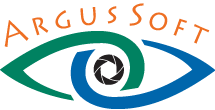
To equip workplaces of students the most expedient use of direct microscope for work in reflected light, inverted metallographic microscopes, or stereo microscopes (depending on task) without a camera and a computer, for the following reasons:
- Such system is simpler for training and servicing.
- It is not required to maintain several computers and to provide their failure-free operation, safety and integrity.
- It provides economy of workspace, electric energy and budgetary funds.
To equip the work place for a teacher it is wise to use an upright microscope for works in the transmitted or reflected light, an inverted metallographic microscope or a stereo microscope (depending on tasks) but with a camera, a computer and a plasma panel or with a projecting camera for the following reasons:
- Possibility of illustrative demonstration of preparations images to students even if the number of single-type preparations is restricted.
- Possibility of synchronized viewing preparations by students and parallel demonstration of preparation images on a big screen.
- Control computer may be used as an additional resource for creation of data bases with preparation images, electronic atlases as well as teacher editions used un the training process.
- It provides a possibility to achieve multitask capability of the premise: i.e. auditorium, equipped by a system intended for multimedia demonstration may be used for other purposes, for example: lecturing using presentation in PowerPoint, holding seminars, sections of scientific conferences and other actions.
- Existence of such multifunctional premise provides a possibility not only use the equipment for teaching students but for solving other tasks, including establishment of refresher courses for material scientists with applied professions, using actively microscopical investigation in their practical activity.
The microscopes engaged in the training process must meet the following basic requirements:
- light-emitting-diode source of light, providing maximally prolonged failure-free operation of the device;
- preset (factory) adjustment of illumination using the method of Kohler;
- reliability of microscope mechanical elements;
- minimal number of dismountable components.
ArgusSoft Company recommends the following models of microscopes for delivery as a part of microscopy training classrooms.

Primo Tech
(Carl Zeiss).
www.zeiss.com

DM 750M (Leica Microsystems). www.leica-microsystems.com

ECLIPSE LV150N
(Nikon)
www.nikon.com

MT7000
(Meiji Techno)
www.meijitechno.com

Axio Vert A1
(Carl Zeiss).
www.zeiss.com

SMZ800N (Nikon). www.nikon.com

GX41 (Olympus). www.olympus-ims.com

ECLIPSE MA100 & МА100 L (Nikon). ww.nikon.com

IM 7000 (Meiji Techno). www.meijitechno.com

Stemi 305 (Carl Zeiss). www.zeiss.com

EZ4 & EZ4 HD (Leica Microsystems). www.leica-microsystems.com

DM IL M (Leica). www.leica-microsystems.com

SKT (Meiji Techno). www.meijitechno.com
 English
English Русский
Русский